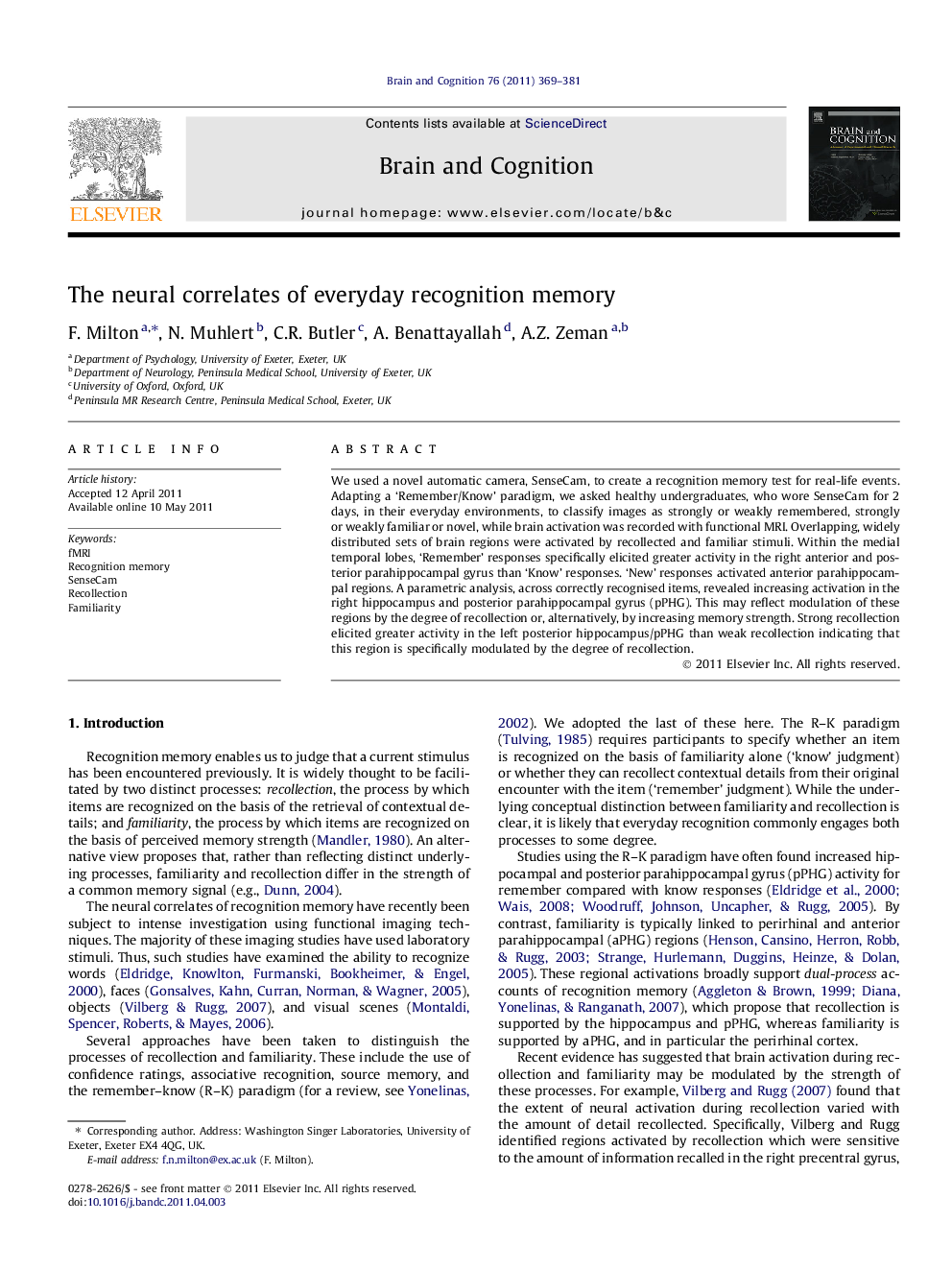| Article ID | Journal | Published Year | Pages | File Type |
|---|---|---|---|---|
| 924173 | Brain and Cognition | 2011 | 13 Pages |
We used a novel automatic camera, SenseCam, to create a recognition memory test for real-life events. Adapting a ‘Remember/Know’ paradigm, we asked healthy undergraduates, who wore SenseCam for 2 days, in their everyday environments, to classify images as strongly or weakly remembered, strongly or weakly familiar or novel, while brain activation was recorded with functional MRI. Overlapping, widely distributed sets of brain regions were activated by recollected and familiar stimuli. Within the medial temporal lobes, ‘Remember’ responses specifically elicited greater activity in the right anterior and posterior parahippocampal gyrus than ‘Know’ responses. ‘New’ responses activated anterior parahippocampal regions. A parametric analysis, across correctly recognised items, revealed increasing activation in the right hippocampus and posterior parahippocampal gyrus (pPHG). This may reflect modulation of these regions by the degree of recollection or, alternatively, by increasing memory strength. Strong recollection elicited greater activity in the left posterior hippocampus/pPHG than weak recollection indicating that this region is specifically modulated by the degree of recollection.
► Recognition of old items activated the autobiographical memory network. ► Right hippocampus increased linearly across the different memory types. ► Greater activation in left hippocampus for strong than weakly recollected items. ► Different areas of the MTL associated with novelty and old items. ► Everyday recognition memory produced similar activation to lab-based tests.
